
It’s been a number of years now since I did the last series of trigger reviews. Those included reviews on the Bix’n Andy TacSport line, TriggerTech two-stage 700 triggers and TriggerTech single-stage 700 triggers. I have been thinking of visiting the subject again for a bit, and building the rifle for the 350 Legend project gave me the excuse. I considered quite a few different possibilities, and I may revisit some of those in the future, but for this go around, the X-TREME Shooting Products Mod 22 was the obvious choice. I have had interest in XTSP triggers for quite some time. They first came to my attention a number of years ago with their replacement trigger for the Kimber 82g. I was spending a lot of time with my 82g shooting a 3-position league at that time and was knocking around the idea of improving the trigger. XTSP was alone in making an improved replacement trigger for the 82g, and that trigger appeared to be very well-liked. Later, XTSP was chosen to design and manufacture the Accuracy International competition trigger. After that worked out well, AI replaced the trigger the AXSR was originally slated to have with one designed and manufactured by XTSP. XTSP were also to be the maker of the trigger for the Remington MSR rifle that originally won the PSR contract and was designated the MK 21 precison sniper rifle before Remington dropped the ball on that one. That trigger, as well as the MK 13 model 22 trigger used in the MK 13 Mod 5 sniper rifle and originally designed for the Mk 7 sniper rifle, are quite similar to the Mod 22 trigger we will be looking at in this review.
Table of Contents:
– What is a Two-Stage vs. a Single-Stage Trigger
– Analysis of the XTSP Mod 22 Design
– Fitment and What Being a 700 Semi-clone Means
– Pull Weight and Drop Testing
– Observations and Field Notes
– Summary and Conclusion
What is a Two-Stage vs. a Single-Stage Trigger
Before I go into the unique design elements of the XTSP Mod 22 two-stage, I should probably explain the general difference between two-stage and single-stage triggers, as many shooters do not have experience with two-stages and therefore do not understand the difference.
We should start with how a single-stage trigger is supposed to feel in a precision rifle. Ideally on a single-stage, you have no perceptible movement before the trigger breaks. If the trigger moves some loosely before you feel any spring force pulling against you and before you have any sear movement, you call that ‘slack’. If you feel a gritty movement as the sear perceptibly moves before releasing, you call that ‘creep’. You don’t want either of these on a precision rifle. You just want the trigger to not move in any perceptible way until the break, and that is exactly how the best single-stage triggers feel.
Of course, if you have a single-stage trigger set really light, say 4oz, it can be pretty easy to accidentally set it off as you move your hand into position, as the act of simply finding the trigger with your finger is likely to bump it hard enough to set it off. On the other end of the pull weight spectrum, it can also be hard to tell exactly when the trigger is about to break on a heavy pull, as everything between 3 and 4 lbs might feel more or less the same to the shooter, making it hard to time the shot release and pretty tempting to yank instead of squeezing the trigger. Using a two-stage can substantially mitigate both of these issues.
The ideal two-stage pull has a first stage where there is smooth trigger movement and a consistent amount of spring force. During this stage the sear is typically not moving and the trigger is usually just pulling against a spring not in contact with the rest of the mechanism, including the sear, etc. At the end of the first stage’s movement, the trigger movement stops on the second stage, which is known as ‘the wall’. Here, as on a single-stage, there should be no more perceptible movement until the trigger breaks.
The benefits of this two-stage movement pattern are several. First, an inadvertent bump on a light trigger is less likely to set it off since it takes substantial movement to reach the second stage, even if it is a light two-stage and that movement doesn’t take much force. This makes it easier to marry up to a light trigger without setting it off. Second, you can make a heavier safer trigger feel lighter by going with a fairly heavy first stage and a bit lighter second stage. This is because you perceive changes in the force you apply more than the absolute force. A 16oz first stage followed by an 8oz second stage feels more like an 8oz trigger than a 1.5lb trigger because you perceive the difference in pull force between the first and second stages more than the combined weight of the stages. That is a big deal and, frankly, it feels a little like cheating physics. A 1.5lb trigger takes a good bit of concentration to break well in a single-stage, but is pretty low on the mental overhead when it comes to breaking it cleanly and on time when it feels more like an 8oz on a two-stage. Lastly, two-stage designs, with their intrinsic movement, offer designers the opportunity to make the trigger even more intrinsically safe by putting in place passive internal safeties based on that movement. Not all makers do this, but it is possible. For my part, in the couple of years that I have been playing around with two-stages, I have come to see the concept as a large advantage in trigger control, and I pretty clearly prefer them now.
Analysis of the XTSP Mod 22 Design
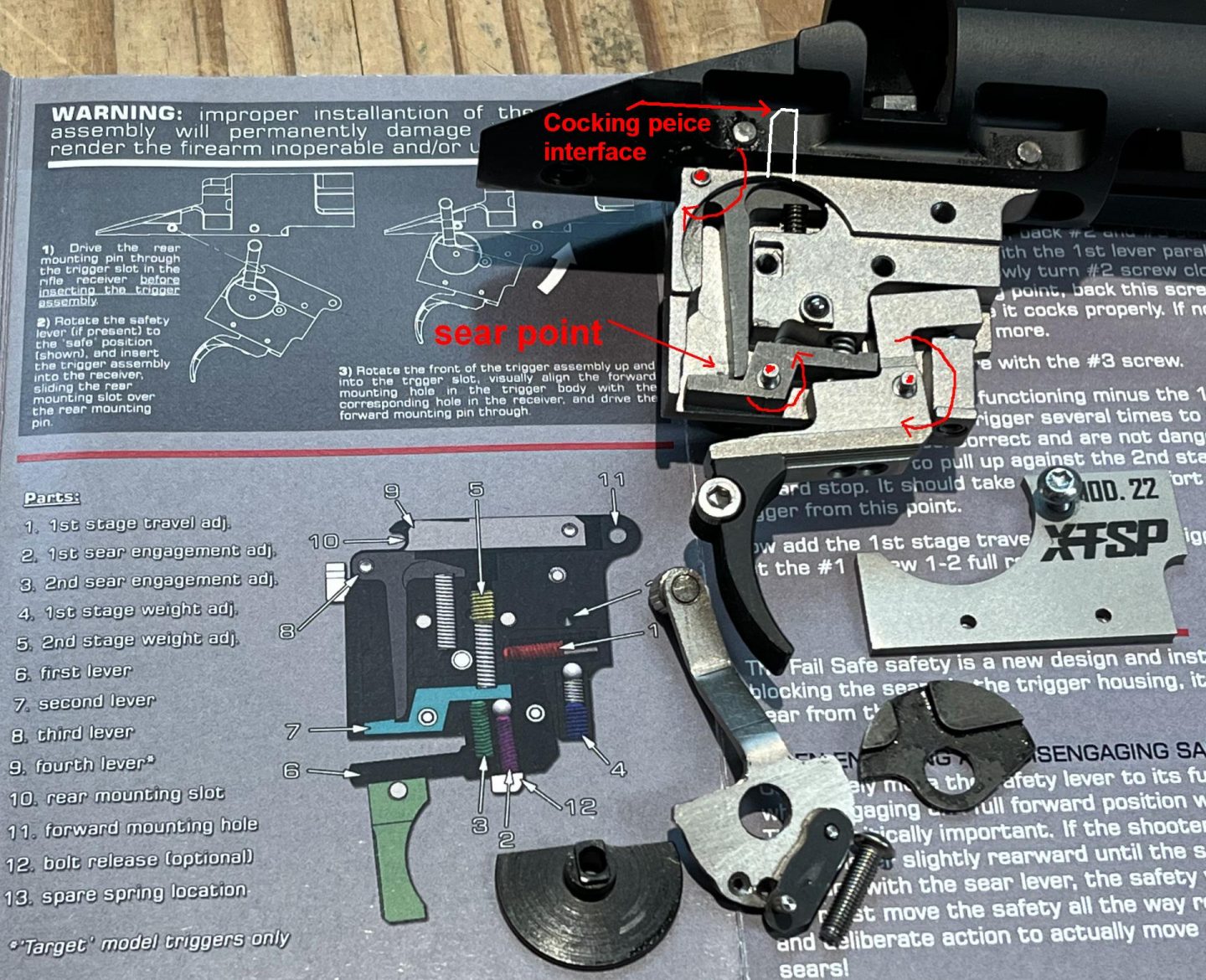
XTSP manufactures the Mod 22 trigger in a lot of different configurations. This includes not just different safety configurations and different trigger shoes, but also the substantial difference of a 3 lever tactical and 4 lever target variance. Pretty much all of these features can be mixed and matched. For instance, bolt stops can be added to either variant for those using the Mod 22 on a factory 700 that lacks the now ubiquitous side bolt stop of the clones. Adjustable trigger shoes can also be added to either Mod 22 variant. The example I have is the 3 lever tactical configuration but with the adjustable shoe more commonly found on the 4 lever target variant. This adjustable shoe utilizes the same dovetail as the Accuracy International triggers. XTSP switched to this configuration from the round Anschutz trigger shoe attachment previously used when they started making the AXSR trigger for AI, as they found the design more robust.
Looking more closely at the 3 and 4 lever Mod 22 variants, the image below includes the printed diagram of the 4 lever variant below the 3 lever variant being tested here with its side panel off and safety removed so that you can see its inner workings. As the top of lever three in the 3 lever variant is obscured both by the trigger housing and the rifle action, I have traced in white what that part of the lever looks like. You can therefore see that in the 3 lever variant, that third lever contains the topsear part and that the topsear in this configuration falls forward when firing. With the 4 lever variant, the topsear is on lever 4 and falls downward when firing. In practice, the difference between the two designs is that the 4 lever variant will have a somewhat lighter second stage trigger minium pull weight because much of the force of the cocking piece on the topsear is being born by the front pin on that fourth lever resulting in much substantially less force, and therefore less friction, at the sear point. This will not be a huge difference, however, as the pull weight springs do not differ between the designs, and the vast majority of the geometry is also shared. The product literature lists the pull weight range of both models as from 10oz to 3.5lbs.
In my testing, I was able to get the 3 lever variant as low as 1.76oz on the first stage (with the light spring) and 6.17oz on the second stage for a total minimum pull weight of ~8 oz. Maximum pull weight exceeds my gauges and is listed as ~3.5lbs in the literature. As you get low in weights though, you must be careful. It is possible to screw out the weight adjustment screws too far, such that they are no longer under any compression and the trigger no longer functions properly. It can be unsafe and erratic in this state. For instance, in the case of the second stage weight adjustment screw being set too loose, the trigger will not reliably reset to full sear engagement after firing and may have either partial sear engagement or not reset at all. For those looking to adjust for the lightest pull, the XTSP trigger is unique in that its side panel can be removed with the trigger installed allowing you to see the springs directly. If you are going to do this, remove the bolt from the rifle first, as you do not want force from the firing pin spring on the trigger components with the side of the case off, as you may bend pivot pins if you do so. On another note, you do not need to remove the safety when you take the case side off in order to see the adjustment weight springs. The case side and safety mechanism remove completely independently of each other. Each are attached with a single fastener and there is little reason to remove the safety at any point as you can visually adjust the trigger or thoroughly clean it with just the case side removed. With the case side off, you can see the stage weight springs as you adjust them, allowing you to adjust them the minimum amount necessary for contact with the corresponding internal parts they must be in contact with for proper function. Be sure to test the function thoroughly after replacing the case side as those pins shift a little when the side is put on and the springs need full engagement for safe function. I will add here that being able to remove the side of the trigger case with the trigger still installed in the rifle is an excellent feature I have not encountered in competitors’ designs, as it allows for cleaning without the onerous task of pounding out the pins attaching the trigger to the action. Incidentally, on installation or removal, only the front trigger pin is pounded out or in on the XTSP trigger. The rear pin is left in the rifle and the trigger simply hooks around that pin and rotates into place.
As I experimented with different weights, I found the XTSP Mod 22 gives you a lot of pull weight adjustment in both the first and second stage. This is not a big spring, little spring type arrangement where you really only get substantial pull weight adjustment on one of the two stages. On this trigger, you have similar adjustability on both of the stages.
Regarding the XTSP trigger’s safety. It appears unique in that the entire safety mechanism removes with the lever. It functions by essentially hooking the bottom arm of lever 3 when engaged and pulling forward so that the sear is no longer engaged. As with other 700 safeties, it cannot be engaged with the rifle not cocked.
I will mention here that the XTSP trigger comes with a second spring option for the first stage pull weight. In the case of my example, the trigger came with the light spring installed and the heavier one in the Ziploc bag. There is some overlap in ranges between the two, but it looks like you will probably go with the light one up to about 10z and the heavier for anything above that. In the past, the XTSP trigger had a hidden compartment for storing the spare spring under the case cover, but that appears to have been dropped at some point. In addition to that second spring, the XTSP Mod 22 trigger comes with the very informative three-panel instruction card containing the labeled diagram of the trigger internals I pictured, as well as two hex wrenches for adjustments.
Fitment and What Being a 700 Semi-clone Means
When I think about it, it is pretty surprising that as many 700 semi-clone platform products work together as actually do. Non-critical and even critical dimensions vary from manufacturer to manufacturer on virtually all of the parts involved in the platform. Triggers are no exception to this and you may have some modification necessary to fit the XTSP Mod 22 into your rifle.
The most likely fitment point you will find with the XTSP trigger is that, like many aftermarket triggers, it is slightly longer and slightly wider than a stock 700 trigger. You will likely have to remove some material from your bottom metal and perhaps open up your stock inlet a little to accommodate the larger size. In the below image you will see I had to remove a little material in two places from the Hawkins Hunter bottom metal for the trigger to fit. I did this with a Dremel high speed cutter bit. I was careful and so the resulting alteration is not visible on the assembled rifle. Some fitment in this regard is very likely necessary for those using a stock and bottom metal, as all of the different bottom metal I had on hand from a variety of different makers requires such modification to fit. I believe modification is probably less likely for fit on a chassis system, as the one I had on hand had room to spare.
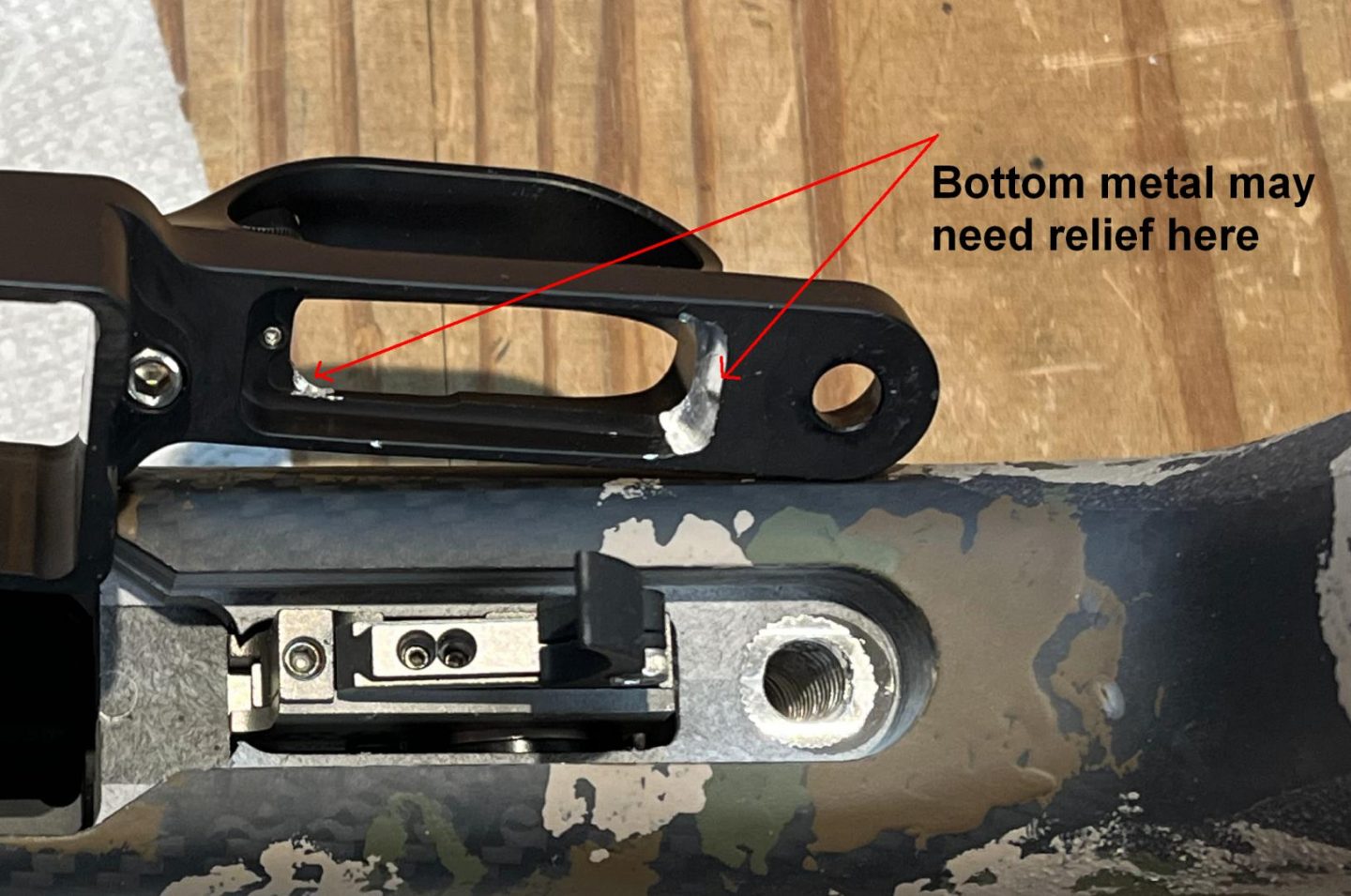
Another potential area where the XTSP trigger may have trouble fitting with some actions is the cocking piece. This will be true only for the 3 lever variant of the Mod 22 trigger. I do not anticipate the 4 lever variant to have any unusual cocking piece interface issues. The 3 lever variant has a fairly short topsear though, so if it is engaging with an action that has a cocking piece that is shorter than normal or has an angled bottom surface, the trigger will lock the firing pin forward after the initial firing, and in so doing, lock the bolt closed as well. Trying to force the bolt open in such situation would likely break the trigger. To remedy, the front trigger pin will have to be removed to resolve the situation in a non-destructive manner. I encountered this situation when attempting to test the Mod 22 trigger in my Gen 2 Vudoo V-22 action. That action has a cocking piece with an angled bottom surface. The 3 lever variant of the XTSP trigger can be made compatible with this action and with other actions having an angled or very short cocking piece bottom surface, but you will need to mention this when ordering as it requires a slightly different geometry lever 3 to be installed when manufacturing the trigger. Or you could just go with the 4 lever variant.
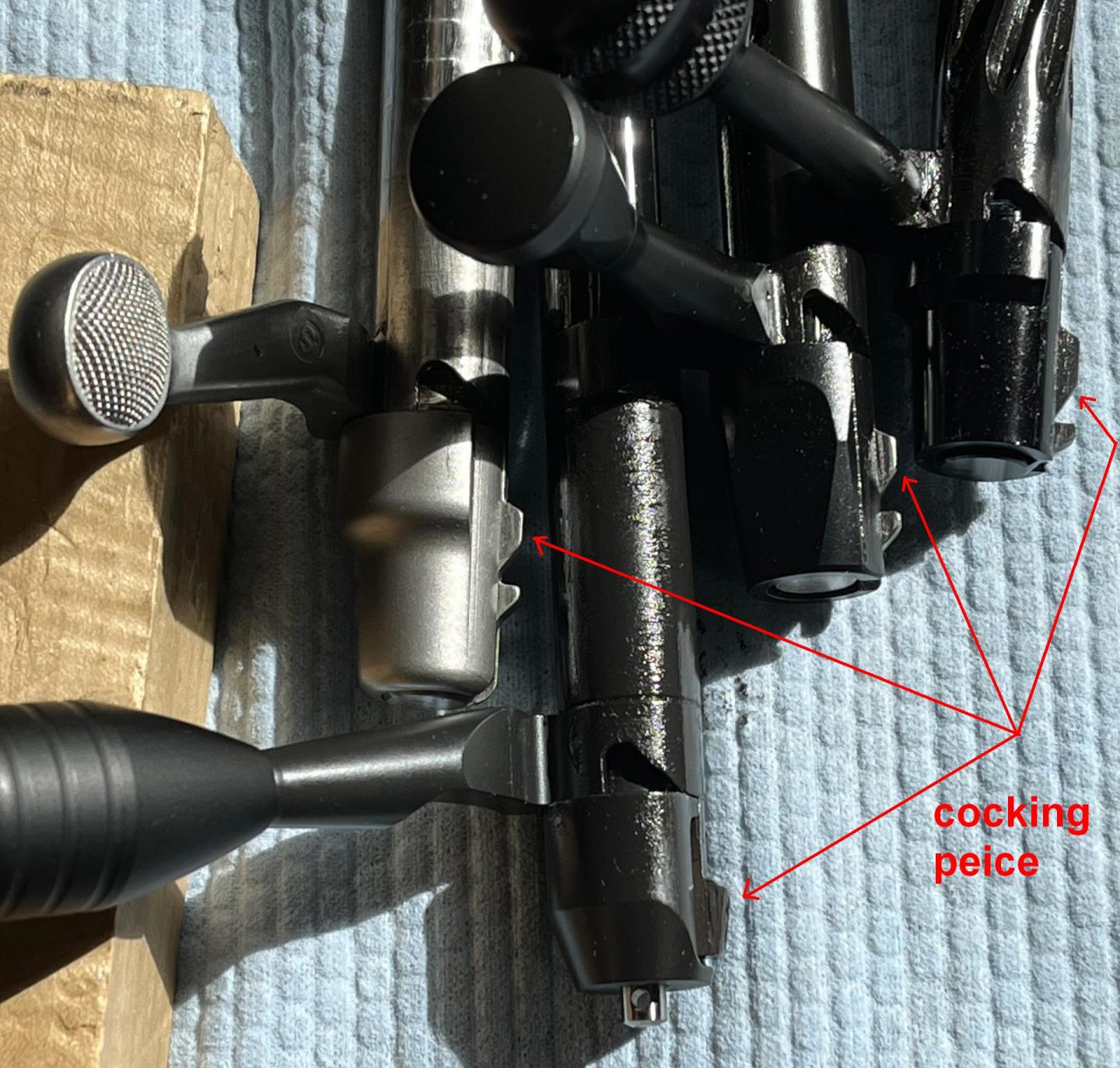
Pull Weight and Drop Testing
A few trigger reviews ago, I picked up a used Halda force gauge for testing consistency in pull weights. You would not believe how inexpensive you can get a really good used force gauge. I would recommend this to my fellow shooters over one of the low quality gun brand options – if I thought there was really any reason for most shooters to have a trigger pull gauge. I certainly never did until I needed quantitative data for doing reviews. The range on my Halda is ~3.5oz to ~35oz with a little leeway to estimate on either end of the range as it is analog. To test consistency, each trigger was therefore set at ~16oz and ~32oz when possible. For the two-stages, pull weights between the stages are set as close to equal as possible at each test weight. The XTSP Mod 22 tactical, and TriggerTechs were capable of being set equal at both pull weights, but the Bix only goes up to about 8oz on the second stage, so that was the setting for both its tests. Twenty pulls are done with each trigger at each weight and extreme spread and standard deviation are calculated from the resulting data. Consistency testing is always done in the Kelbly Atlas action for consistency and because that action has a trigger hanger allowing for easy trigger swaps without violent pounding. All of these triggers were run without lubrication.
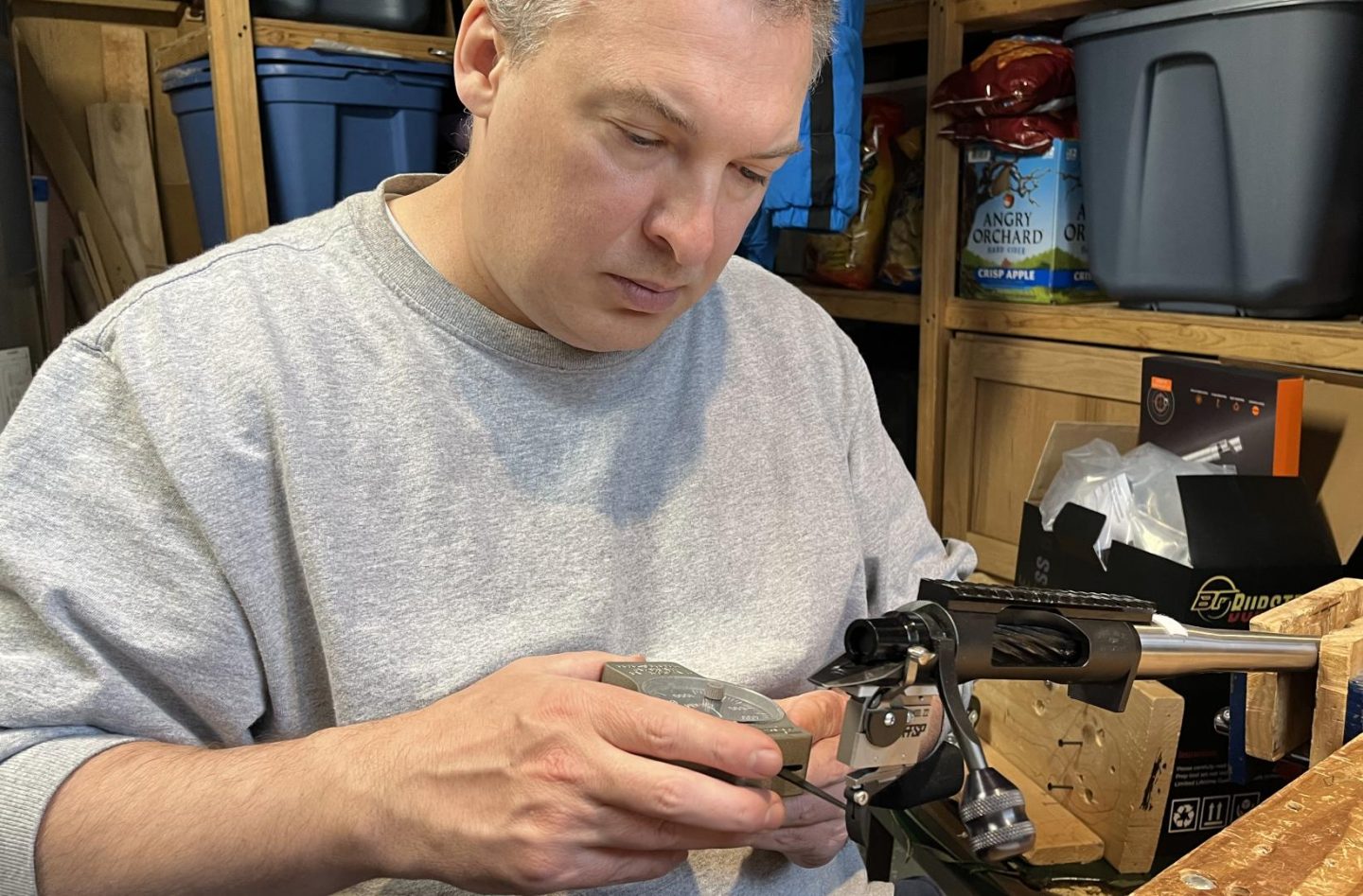
The break weight consistency of the XTSP Mod 22 Tactical was where I would expect it to be, in close company with its high-end aftermarket competitors and far more consistent that the professionally tuned Remington walker trigger. The XTSP did not have the lowest variance amongst the premium aftermarket triggers, nor did it have the most. In practice, all of these aftermarket options are consistent enough that the user will not note differences in break weight from shot to shot.
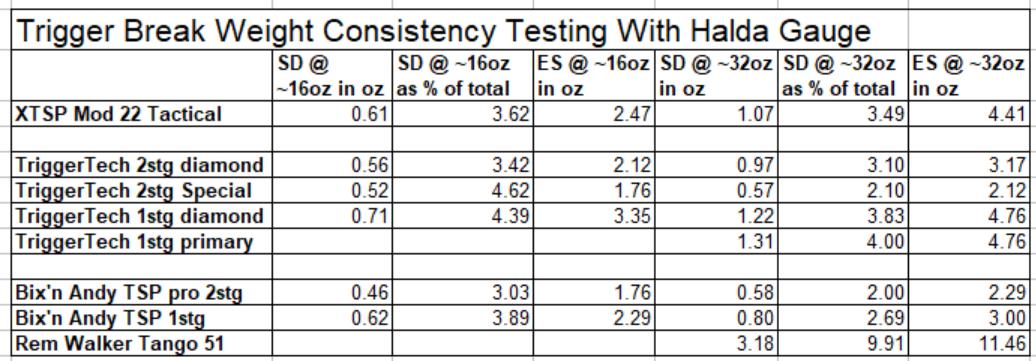
One important note on the XTSP following testing is that, in the process of testing, I moved the adjustment screws in and out enough to strip the polymer anti-vibration component from them. The result was that the adjustment screws, particularly the one on the second stage pull weight, became loose enough to back out over time. The fix for this is to re-apply a polymer anti-vibration product to the threads of those screws. Vibra-tite VC-3 is the appropriate product for this. Do not use an anaerobic thread locker such as Loctite for this, as these products form a hard and non-adjustable bond. You are looking for an elastic adjustable bond. If you regularly readjust your trigger pull weight for different situations such as hunting vs. competition, expect to periodically reapply an anti-vibration product when those adjustment screws start to feel loose as you adjust them.
This brings us to safety testing. I tested the XTSP Mod 22 Tactical for slam fires as well as drop safety in a variety of states in several different actions. I was not able to induce a slam fire with the safety on or off. I was also not able to induce a discharge by dropping the rifle on its butt with the safety on. However, it is easy to induce a discharge by dropping the rifle on its butt with the safety off. This is not just true at minimum pull weights but even with substantially more pull weight. Being not drop safe with the safety off is not uncommon for triggers in general, and is especially common for target triggers. Still, the XTSP is easier to set off than others I have tested and I have encountered triggers that did not go off even at minimum pull weight.
Observations and Field Notes
When using the XTSP Mod 22 trigger, what struck me most was how nice it was to have the adjustable trigger shoe. I have smaller than average hands and being able to slide the pad all the way to the back made for much better hand position than I usually have when I’m using a rifle I haven’t added a handmade grip to. I did not think this was going to be something I noticed, but it was – and I think it’s a selling point.
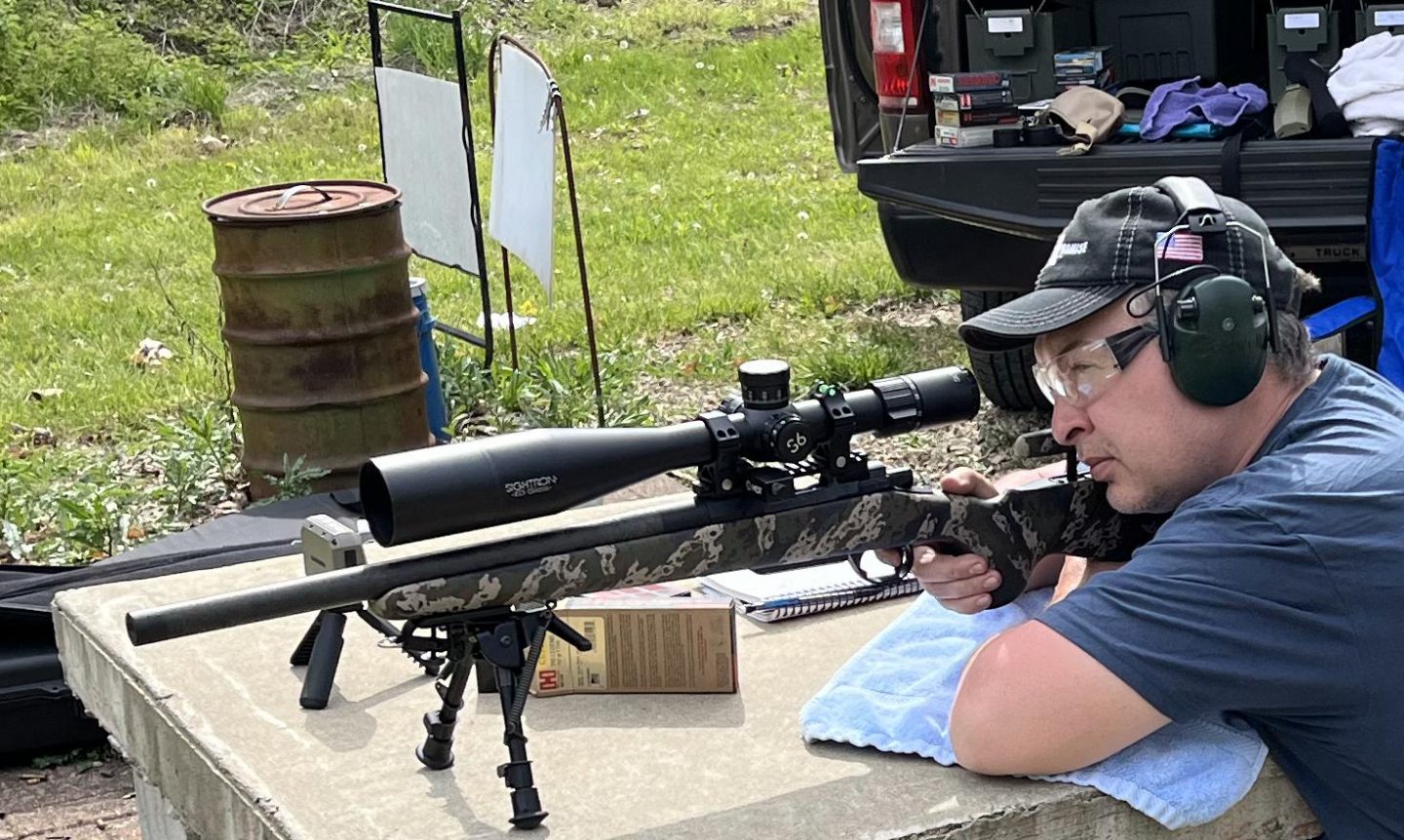
The other thing I noticed when shooting the XTSP Mod 22 was how long a first stage you can have. While you could adjust this to be shorter, you have the option on the XTSP Mod 22 to also have a very long first stage, which is not an option you have with some competitors. If you are looking for that, the Mod 22 can deliver it. I don’t have a definite opinion on whether I think a long first stage is a desirable feature, but it’s always a desirable feature to have choice, and the Mod 22 gives you that here.
Other than those two observations, the XTSP Mod 22 felt just as I expected in the field, a nice smooth first stage with a solid wall and a clean break without creep on the second stage.
Summary and Conclusion
I went into this review curious as to why I haven’t seen a substantial amount of Internet talk about the XTSP Mod 22 trigger. Variants of it have secured prestigious U.S. and western foreign Military contracts. XTSP was also chosen to produce AI’s AXSR and competition triggers. Doing this review has not provided me any insights in that direction. The XTSP Mod 22 is a good trigger and it’s not like they just came out with it yesterday. XTSP has been making the trigger far longer than most of the triggers it competes with. I also get a kick out of putting one in the PurePrecision 350 Legend straight-walled precision rifle build, as that rifle is a Midwestern deer rifle and XTSP triggers are manufactured in the Midwest, just down the road in Cincinnati, Ohio.
In practice, I found the XTSP Mod 22 trigger to have great feel. It has a nice, smooth, first stage that can be much longer than you can get on most two-stage triggers followed by a solid wall and creep-free consistent second stage break. I found the option of an adjustable shoe a welcome one, as I was able to get a noticeable improvement in trigger reach by its use.
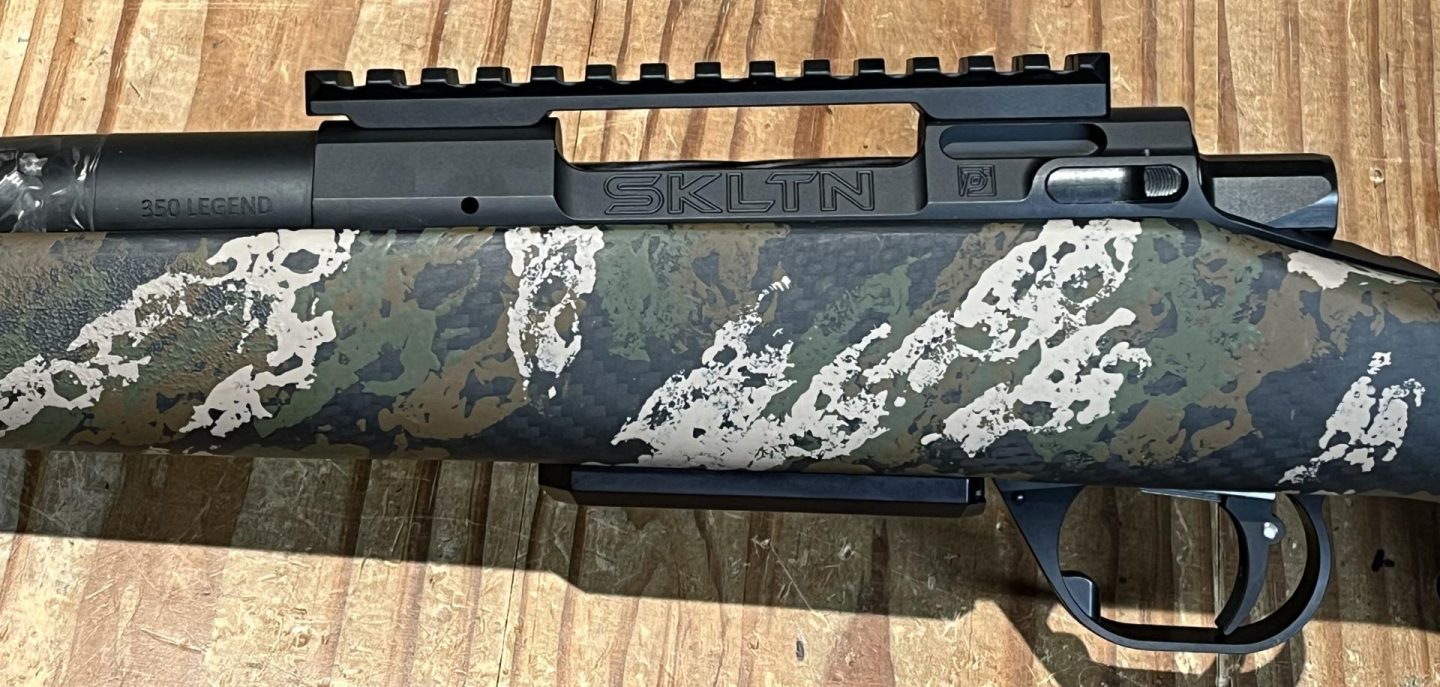
The feature set on the XTSP Mod 22 is extensive. It offers a substantial pull weight range adjustment on both stages, a large total adjustment range from about 10oz to 3.5lbs, and a substantial number of configurations, most of which can be mixed and matched. You can configure with or without a safety, bolt stop, or adjustable trigger shoe. If anything, there might actually be more options than necessary, as the 3 and 4 lever variants of the Mod 22 have relatively minor differences in pull weight range. Perhaps, it would make more sense to add a left-handed variant than to produce both a 3 and 4 lever model.
The XTSP Mod 22 is quite unique in its design, in that the side case cover can be easily removed by a single screw without removing the trigger from the action to allow for easy cleaning or visual inspection while moving adjustments. This is a very nice feature to have and I am unaware of any competitors with a similar design. XTSP also does not void your warranty for opening up the trigger to clean it, as some makers do. That warranty is a lifetime warranty under normal use conditions to the original owner.
During my testing of the XTSP Mod 22, I encountered a few fitment considerations consistent with what is common in the 700 semi-clone ecosystem. The Mod 22 is slightly longer and wider than stock 700 triggers, so most bottom metal and some stocks may need to have areas opened up some to accommodate the size. The 3 lever Mod 22 trigger with the stock topsear may also be incompatible with some actions whose cocking pieces deviate from the standard 700 dimensions. Users with these would be better off with the 4 lever Mod 22, though you could also request a different topsear for the 3 lever variant.
The downsides I see to the XTSP Mod 22 are that, with the safety off, it is one of the easiest triggers I have encountered to set off if dropped. It is also easier to adjust out of proper function than many other triggers I have encountered. The manual does a good job of informing the user about this, but it should be a consideration for the mechanically disinclined. Lastly, at ~$350 depending on configuration, the Mod 22 is one of the most expensive trigger choices.

